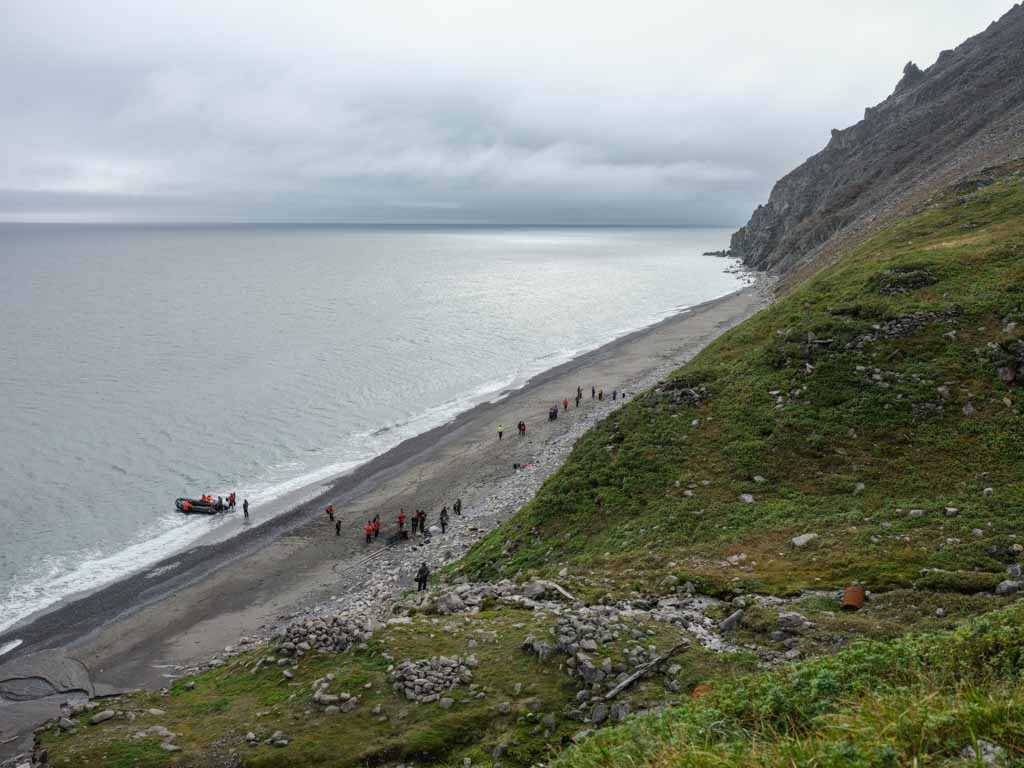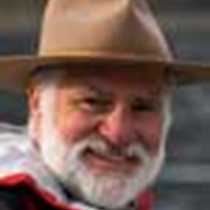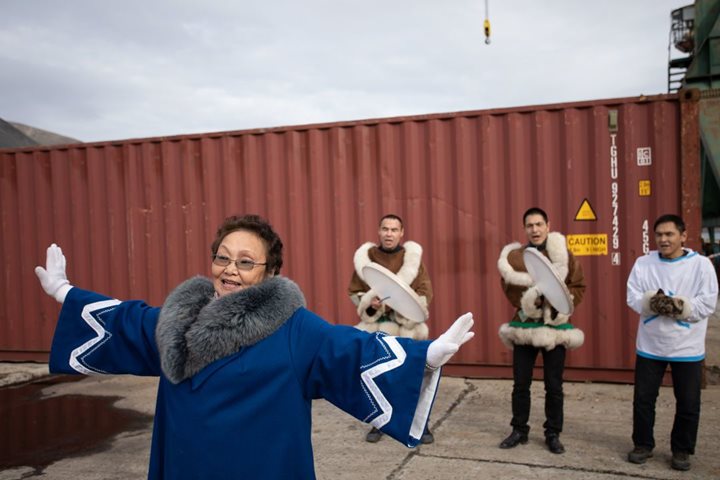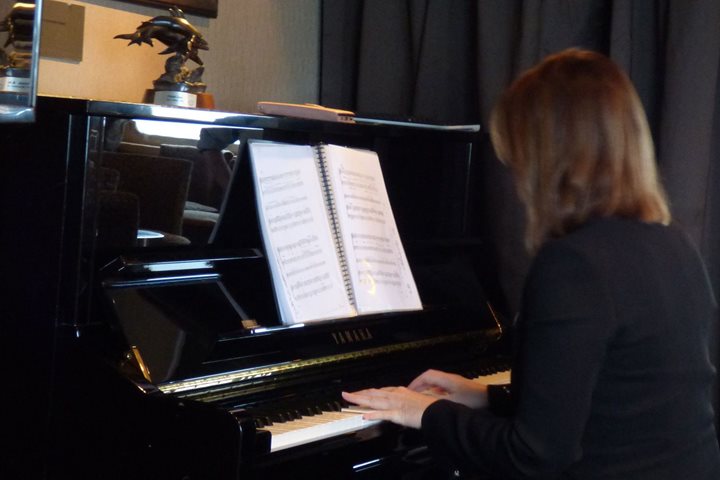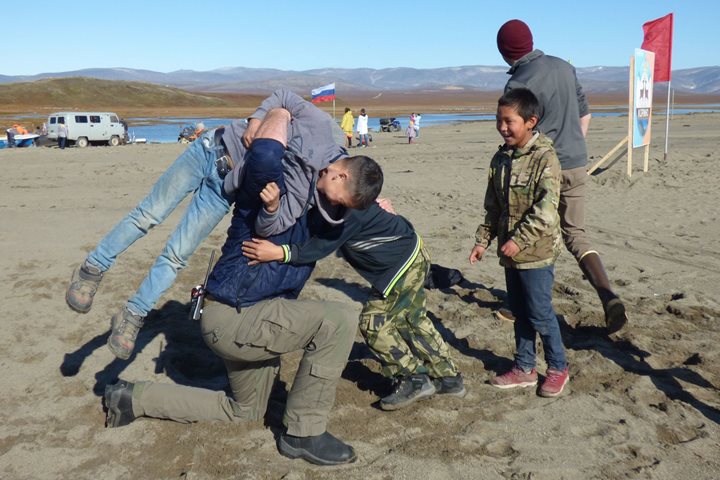The morning was spent sailing over glassy seas. There were fog patches that gradually rose throughout the morning, bringing a near ethereal feeling to the seascape we found ourselves in. Seabirds would glide past us – well not so of those from the auk family. One could not quite categorize their maneuvering as flight, as much as ambling bumblebee-like above water. Early risers would either head for the observation lounge with coffee and maybe chat to fellow shipmates, or head for the bridge – always a prime early morning hangout – or head for the gym for pre-expedition warmups.
The dining room was the usual sumptuous affair with an abundance of foods to choose from. Afterward we had a marvelous presentation from our National Geographic photographer. He told us about his early life, how he became a photographer and got involved in the Alaskan fishing scene.
With hardly any time to catch a breath, whales were spotted and announced over the PA, and we promptly headed to the open decks and bridge to enjoy close encounters with humpback and gray whales quietly feeding in these nutrient-rich waters. It is almost certain that they were feeding on krill. Encounters with whales are always special and elicited many emotional responses from all of us.
Lunch was earlier, to accommodate our afternoon landing at Cape Dezhnev, the easternmost point on the planet. The Zodiacs quickly got us ashore, the landing a little challenging in the surf, but with staff aid we were soon securely ashore. The main point of interest here is the Yupik village of Naukan which was forcibly abandoned in 1958 during the Soviet era. It is a remarkable spot and the history is palpable. It was inhabited by the Yupik people who were coastal marine mammal hunters. A nearby stream provides fresh water, the main structures from surrounding rock, with the remainder of building materials from whales, walrus, and seals.
It felt like a vibrant community. What is remarkable is the knowledge that these people would travel widely to the Diomede Islands in the middle of the Bering Strait and into Alaska. Journeying of which was carried out in the strong skin boats that these people would construct from the animals they harvested from the sea.
We have opportunities to wander over this area and try and further grasp the many layered story now covered in lichens, mossed, plants, whale bone and other remnants.
Throughout the afternoon fog patches would roll in from the sea and flocks of sandhill cranes would fly overhead in V-formation bringing wonderment, for these birds are also heading off on their long migration route south to spend the winter in warmer climes.
Back on the ship we get ready for the evening recap as well as the captain’s customary cocktails and dinner welcomings. It is an opportunity to learn more about this great little ship and the many people who work on her, many we will never get to meet, but all of whom are dedicated to making our expedition comfortable and secure. Over dinner there is ample time to recount the day’s adventures and afterwards to reflect on how privileged we are to be able to visit such places as Naukan.

